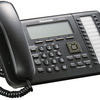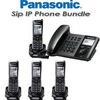| pbxnsip 1600 Osgood St Bldg 20 Suite 223 North Andover MA 01845 Ph: 978-746-2777 Web site: http://www.pbxnsip.com Price: $999 |
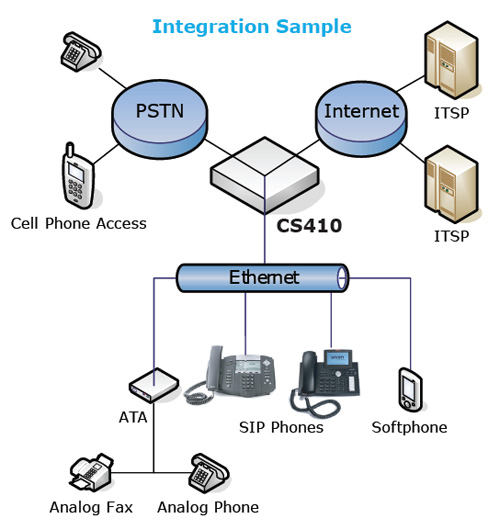
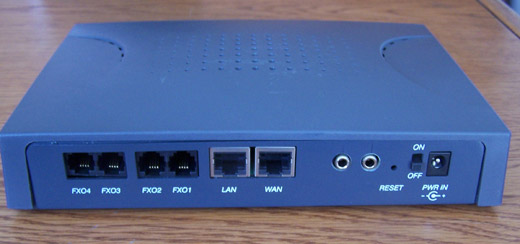
| RATINGS (0–5) Installation: 5 Documentation: 4.5 Features: 4.75 GUI: 4.75 Overall: A |
TMC Labs got an exclusive peek at pbxnsip's CS 410 IP-PBX "all-in-one" appliance, which features a “mini” Session Border Controller(SBC) , built-in 4 analog (FXO) PSTN ports, voicemail & auto attendant, as well as support for up to 10 SIP-based IP stations (hardphones, softphones) and supports up to 10 simultaneous calls. The CS 410 actually includes all available features from the other pbxnsip PBX editions which run on Windows or Linux boxes. This includes standard features like voicemail, auto attendant or conferencing, but also advanced features like call barge in and call forking to cell phones. Like other pbxnsip versions, the CS 410 also supports advanced routing functions such as paging groups, hunt groups, and agent groups.
The pbxnsip appliance reminds us of two other popular Linux-based IP-PBX appliances in the VoIP industry, namely Digium's Asterisk Appliance and Fonality's trixbox appliance. Just comparing the appliances based on price alone, the trixbox appliance (4 FXO ports) is $1499, and the Asterisk Appliance (4 FXS, 2 FXO) is $2195, while the CS 410 comes in at just $999. Of course, each of the appliances has features the other two don't, so it really depends on what features you need. Even with the lowest cost, the CS 410 doesn't skimp on features and unlike the other two, it features integration with Microsoft Exchange Server 2007 UM.
Targeting small-to-medium businesses (SMBs), the CS 410 is a solid-state appliance device with no moving parts, no fans, which results in very minimal heat to ensure long-term reliability of this phone system. In fact, we noticed very minimal heat when we touched the unit's plastic casing. TMC Labs took the CS 410 for a spin and were very impressed with its easy plug-and-play installation and ease-to-use web admin.
In lieu of a hard drive, the CS 410 appliance sports 256MB of Flash and 128MB of RAM running Debian Linux. This only gives you about 1 hour of voicemail storage, however, you can easily get around this 1 hour voicemail storage limit by leveraging Microsoft's Unified Messaging capabilities in Exchange 2007. The CS 410 can send all the voicemail to the Exchange 2007 Server. The CS 410 is unique in the industry in that it is the first IP-PBX appliance to directly integrate with Microsoft Exchange Server 2007 leveraging SIP. The latest version of Microsoft's Exchange Server features built-in unified messaging capabilities, including voicemail storage/playback, text-to-speech reading of email/calendar, and more. Used in conjunction with each other, you can achieve a rich user experience. For example, we were able to dial into the CS 410 and then enter our extension, followed by * and then our PIN to logon to our personal mailbox. From that point we could playback voicemail, but also email using text-to-speech (TTS). Similarly, we also had remote access to our calendar which also leverages TTS.
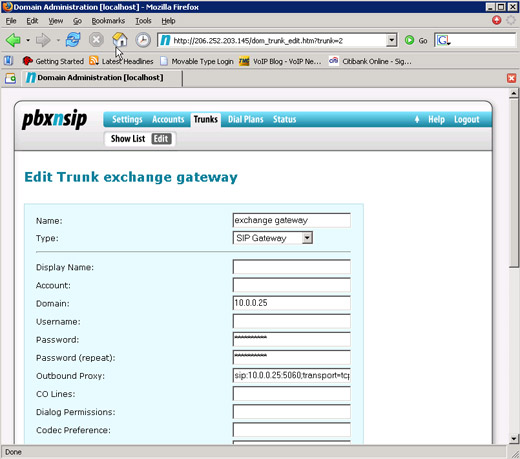
We setup some Exchange 2007 extensions and configured the CS 410 to transfer these extensions to the Exchange Server (screenshot above). We simply had to configure a new trunk on the CS 410, set the trunk to “SIP Gateway” ,and point the IP address to connect to the Exchange Server. On the CS 410 we also had to define a new dial plan for routing incoming calls to the Exchange Server's built-in SIP gateway, which would then accept the call and play the extension's outgoing message. On the Exchange Server side we also had to create a new dial plan and configure the new Unified Messaging IP gateway (the CS 410's IP address or FQDN). Finally, we had to active Unified Messaging for each Exchange mailbox and assign an extension number and a PIN. Voila! We now had fully integrated unified messaging for each of the CS 410 extensions that we created.
Some other nice features of the CS 410 include paging and music on hold audio connectors. In fact, the system can also send RTP multicast traffic and use multicast-enabled devices for office audio paging, such as the snom 370 IP phone. Another security-related feature is full support for TLS and SRTP to secure the voice. pbxnsip mentioned to TMC Labs that they are thinking about adding a built-in firewall/router so they could support TOS tagging to ensure QoS for time-sensitive voice packets. Since the unit runs on Linux, they stated it wouldn't be too hard to add that functionality. The CS 410 also supports a built-in conference bridge, which is great for SMBs looking to save money by avoiding paid hosted conferencing services.
Another feature worth noticing is the agent waiting queues. You can record up to ten announcements and have the music on hold mix in these announcements. The queues also feature agent recovery time, call pickup from queue, call escalation, day/night mode, holidays, and web-based queue status display.
Other features:
- Plug and Play of popular IP phones including Polycom, snom, Aastra, and Cisco/Linksys.
- Web admin as well as SSH access.
- SNMP support.
- Voicemail triggers call to cell phone
- ENUM
- DID
- Dial by name
- Message Waiting Indication (MWI) support
- Call park, call pickup, call retrieve
- Last call return, redial
- Caller-ID blocking
- CDR export through SOAP interface
- Call Supervision: Call barge in, Training mode, Listen in
Conclusion
We really liked the Exchange 2007 voicemail integration. Even without Exchange Server 2007 integration, you can still have the system send you voicemail notification via email. We liked how this appliance integrates the analog telephone lines within the appliance without the need for a separate PC with telephony cards or a separate PSTN gateway. The dial plans are especially powerful and easy to configure. The dial plans allow SMBs to take advantage of VoIP’s low per-minute costs, while also giving SMBs the option to utilize their existing phone lines. For instance, local calls can be terminated through the FXO lines while international calls can be sent to an ITSP using VoIP. It's important to note that it has built-in session border controller functionality for connecting with remote offices. The CS 410 which supports 10 IP endpoints can also be easily upgraded to a CS 425 (simply by changing the license key), which supports 25 registrations and 15 concurrent calls. Overall, TMC Labs was quite impressed with pbxnsip's CS 410, which was easy to configure, a breeze to administer, and sports more features than IP-PBXs that cost four times as much.



